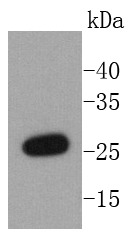NAD(P)H:quinone oxidoreductase 1 (NQO1) and NRH:quinone oxidoreductase (NQO2) are flavoproteins that catalyze the metabolic detoxification of quinones and their derivatives to hydroquinones. This detoxification process protects cells against quinone-induced oxidative stress, cytotoxicity and mutagenicity. NQO2 is a 231 amino acid protein and is 43 amino acids shorter than NQO1 at its C-terminus. NQO2 is an isozyme of NQO1 and transfers two electrons to a quinone, resulting in the formation of a hydroquinone product . The NQO2 gene is ubiquitously expressed and induced in response to TCDD. NQO2 has a higher level of expression in mouse liver and testis than NQO1, which is highly expressed in the heart. NQO2 has a different cofactor requirement than NQO1 and uses dihydronicotinamide riboside (NRH) rather than NAD(P)H as an electron donor. Unlike NQO1, NQO2 is resistant to typical inhibitors of NQO1 such as dicoumarol, Cibacron blue and phenindonee, but is inhibited by quercetin and benzo(a)pyrene. NQO2 contains a specific metal binding site, which is absent in NQO1 and several cis-elements including SP1 binding sites, CCAAT box, XRE and ARE, which are located at the NQO2 gene promoter.

